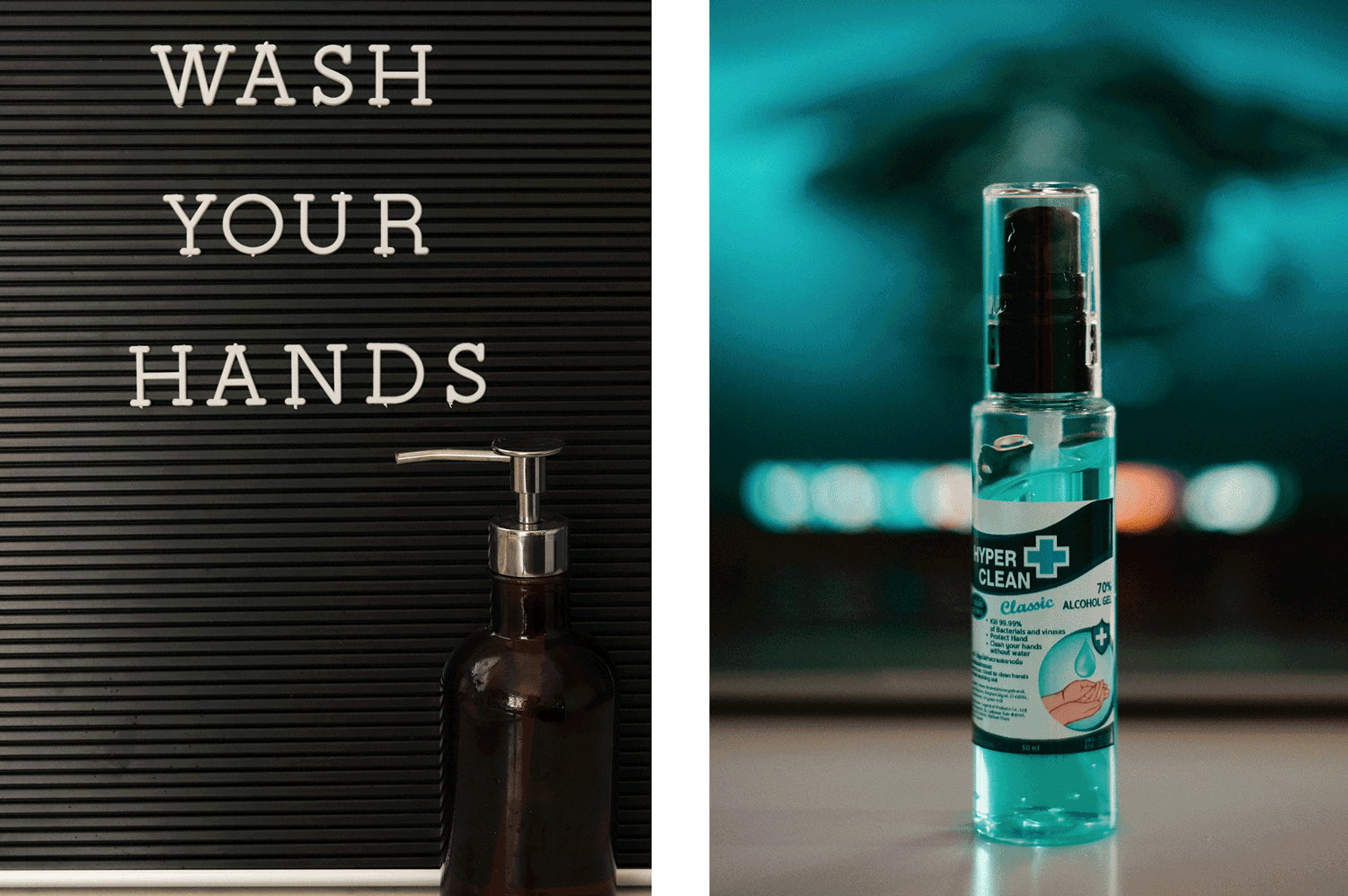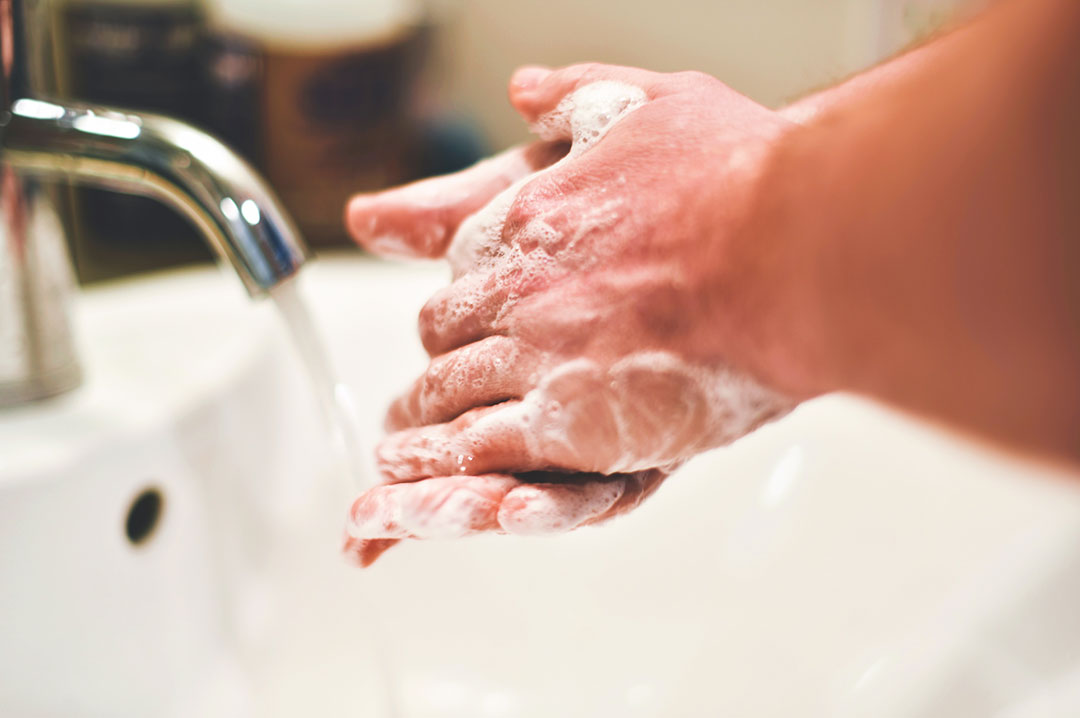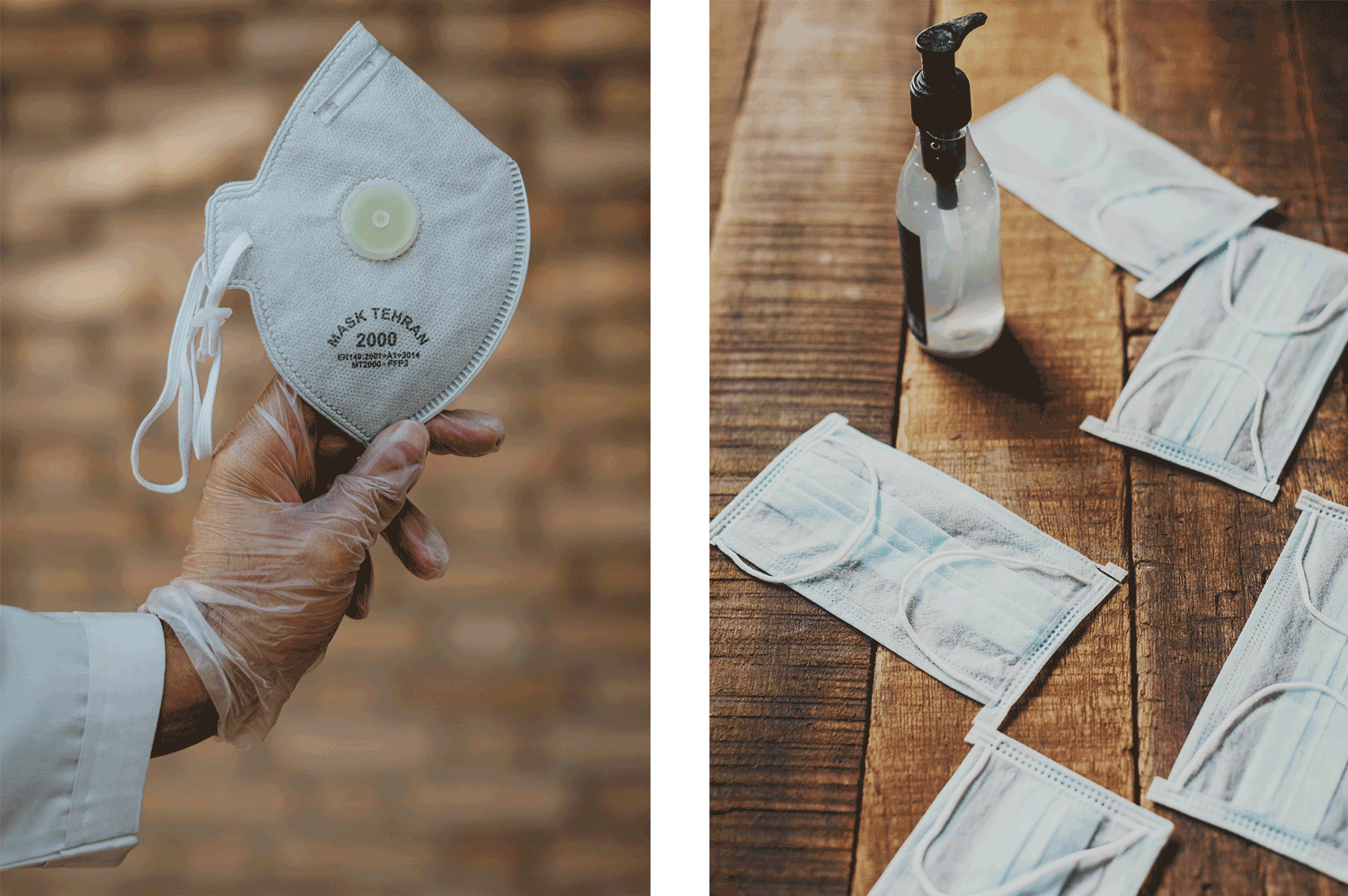Which antiseptic products to take on a trip
During your journeys, it’s best to take antiseptics in the form of a hand-held bottle, size 50-200 ml, some of which are sold with special spray dispensers. You can take liquids up to 100 ml on board an aircraft without any problem, so your antiseptics will always be to hand.
You can also take antibacterial wipes, best of all those containing alcohol. However, liquid antiseptics are more convenient and can be used more economically, meaning they will last for a long time.
And don’t forget about ordinary soap: it’s frequently found in hotels, but for peace of mind you can take a pack with you.

Liquid antiseptics with an applicator are more economic to use than antibacterial wipes, but they don’t replace washing your hands with soap.
What to look for in antiseptics’ ingredients
The most common substance contained in the ingredients of skin antiseptics is isopropyl alcohol. Its content should be at least 70%.
If you have an allergy (this does exist), there are non-alcoholic versions. In that case, the ingredients may include didecyldimethylammonium chloride, polyhexamethylene guanidine hydrocloride, or iodopovidone.
Soap and or antiseptics
Ordinary soap is effective against the majority of infectious agents, as it is capable of dissolving their lipid coating. After washing your hands with soap, there is no need to additionally treat them with antiseptics.
How often to use antiseptics
It’s best to use antiseptics only when there is no opportunity to wash your hands with soap. For example, before meals on an aircraft or when you are walking around town and buy something to eat on a street food court.
As a rule, antiseptics contain substances that moisturize and restore your skin (glycerol or D-panthenol), but if used frequently, they might render it too dry — you may experience an unpleasant tight feeling, and your skin might flake. In that case, use moisturizing creams.
How to use them
Antiseptics should be rubbed into your skin for 15 seconds. They begin to have an effect immediately, and the effect lasts 3-4 hours (providing that the alcohol content is at least 70%).
If you use antibacterial wipes, you should wipe your hands with them for 20-30 seconds.
Prevalent myths
- Pure alcohol (98%) disinfects better than 60-70%.
No, as the higher the concentration of alcohol, the more it is likely to evaporate, but to kill as many microbes as possible, you need time. Moreover, pure alcohol dries and harms your hands’ skin.
- Antiseptics replace washing your hands with soap.
No, because the soap contains detergents that remove dirt from your hands and, combined with a flow of water, mechanically cleanse them from impurities. Soap also contains lipids that dissolve the microbes’ cells.
Antiseptics should only be used if washing hands is not an option.

Don’t forget that hands should be washed for 20-30 seconds, and not simply rinsed quickly in water. After that, there is no need to treat them with antiseptics.
- If you use antiseptics too frequently, microbes can develop resistance to them.
No, because antiseptics don’t kill microbes the same way that antibiotics do — they do it quickly, hence the infection agents don’t have time to adapt and develop resistance.
- If you don’t have soap or antiseptics to hand, you can rub your hands with perfume or alcoholic drinks 🙂
No, alcoholic drinks and perfume don’t contain a sufficient concentration of alcohol, so they are not effective for treating your hands. Among alcoholic drinks, only absinthe could work.
Is it worth bringing masks and gloves with you
It’s perfectly possible that for some time after life returns to normal, we will be a little paranoid. Even though masks are useless for healthy people, it’s psychologically more comfortable to wear them than not to. We explain this point once again.
Ordinary four-layer masks won’t protect you from infection. They are needed to prevent infected people from infecting others. For a mask to be of any use, you need to use respirators of at least FFP2 class, however, they leave marks on your face and so it’s better to wear them with special padding. Respirators and masks should be changed every 2-3 hours.

If you decide to take masks on your journey, to wear them at the airport or on public transport, remember to change them every 2-3 hours.
It’s fine to wear gloves, of course — for example, latex ones are appropriate, but you mustn’t touch your face or eat with them. In a normal epidemiological environment, gloves are useless, because the skin is a good barrier for the majority of microbes, preventing their penetration. The medical staff needs to wear gloves, as do those working in the food industries and so on.
It’s far simpler to wash your hands or use antiseptics because wearing gloves can be accompanied by other problems: they encourage the buildup of moisture, which risks skin maceration (it wrinkles like after long contact with water) and also risks causing allergies.
We are genuinely glad that we can start planning trips very soon and travel as before. However, we mustn’t forget about the safety measures. Antiseptics in your pocket, your hands kept well away from your face, soap, and water are all your best friends. These measures were, are and will continue to be relevant, but perhaps we will treat them a bit more seriously now.


